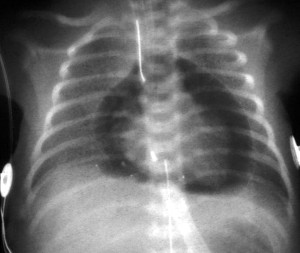So students seem to think of IVs as the holy grail of nursing school, veteran nurses are still bummed out when they can’t get a stick, and there is always that one IV go-to person on the unit that can somehow find a vein that you never saw during the 30 minutes you spent combing those upper extremities! Ahhh the IV!

So some tips on getting that first stick golden IV! Firstly, get to know your IV catheter. My hospital just changed from the small catheters which have the needle safety cap on withdraw, but doesn’t have the valve so you have to hold pressure on the vein below the catheter while connecting the tail and flush – to now we have the huge long catheters with the button for needle retraction. Honestly they both have their pro’s and con’s, and I have found that both need a modification in getting the vein just right. So like I said, get to know the catheter; if you’re a student, roll up some gauze and practice getting the needle in at the right angle and gliding in the catheter with your index finger.
Before starting your IV, get prepared! Have extra IV catheters in case you don’t get the first stick or the vein blows. Set up your stuff, your IV lock and flush etc. I like to set up my tape too, because I still do chevron when I have time to secure the hub.
Check out the extremities before applying the the tourniquet, there is no point just throwing on the tourniquet above the elbow, look to see if you can see a clean vein before applying, this will make the process quicker.
Once you have your spot and tourniquet applied, tap the vein to get it to stand up. It will make it much clearer and easier to puncture.
Use your non-dominant hand to keep the area taught, this will reduce rolly veins from running or sinking away from you.
If you don’t get a good stick, don’t beat yourself up. Sometimes it happens and who knows the pt might end up with a PICC due to poor venous access anyhow!
Practice makes you better! If you are a student take every opportunity to watch or attempt an IV start. If you are a new nurse and still intimidated by IVs, tell your colleagues to let you know if they have a pt who needs an IV, let the charge nurse know you want to practice or assist them in starting IVs – they will be impressed by your eagerness to learn and guaranteed you will get better! Good luck and get sticking!
This is a decent video for students who want a start to finish visual on venipuncture!
Related articles
- Turning IV failures into successes (timesofisrael.com)
- IV tips: (emscapstone.com)





